SO YOU’RE interested in Ford Australia’s new Mustang R-Spec.
Who wouldn’t be? It’s a 500kW-plus supercharged beast built right here in Victoria with select components from Ford Performance’s high-end modifications catalogue. And at $99,980 it’s stacking up at a good price, too.
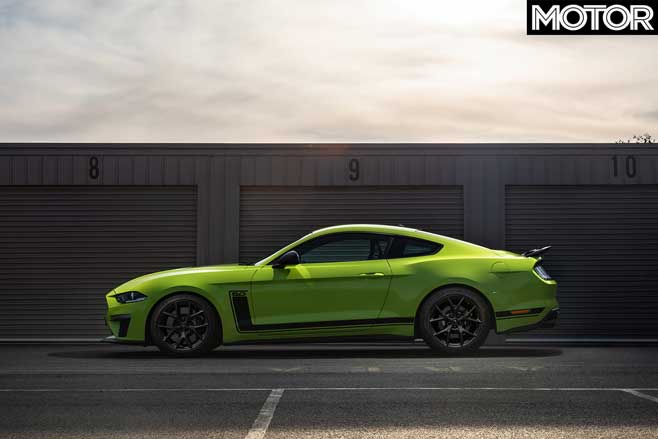
But now that we’ve shared some crucial insights into the build story and specific process each one of the 500 cars will go through, it’s time to learn more about the actual car.
MOTOR was on hand at the car’s official reveal in Sydney to speak with Ford Australia’s Special Vehicles Engineering Manager Justin Capicchiano, someone more than qualified to share the car’s technical specifications.
Obviously, with a car of this calibre, there were a lot of nitty gritty details on its oily bits to cover, so we’ve broken down the information into four easy-to-digest sections, starting with the…
ENGINE: THE HEART OF THE BEAST
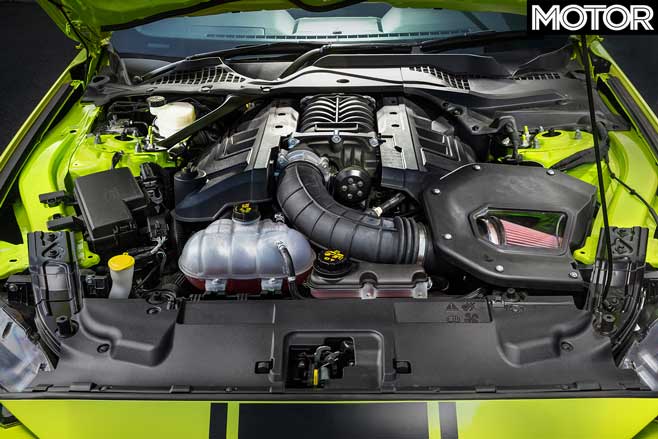
At the core of the R-Spec is a third-generation Coyote 5.0-litre V8 that houses a Ford Performance Roush supercharger. At 2.65 litres its designed to produce 12PSI of boost.
Ford’s avoided quoting power figures since it has not completed local certification, but Capicchiano’s confirms it makes everything that it should – as in it meets Ford Performance’s own quotes for 522kW and 827Nm. Even on Aussie 98 octane.
“That’s Ford Performance data,” he says, “because it’s a Ford Performance package, they’ve done all their testing in The States, so we take that pack, like other aftermarket outfits, we use those figures as well.”
A Borla exhaust assists the supercharger and is made to Herrod Performance’s specs. Herrod is the local tuning outfit Ford Australia developed the R-Spec with, so you’ll even see ‘Herrod’ stamped into the resonators, while you’ll see ‘Ford‘ on the exhaust tips.
However it’s more than just a set of four tips. “It’s not just the rear diff back exhaust,” Capicchiano adds, “it goes from the primaries back, almost three quarters of the way. It’s a three-inch twin system.”
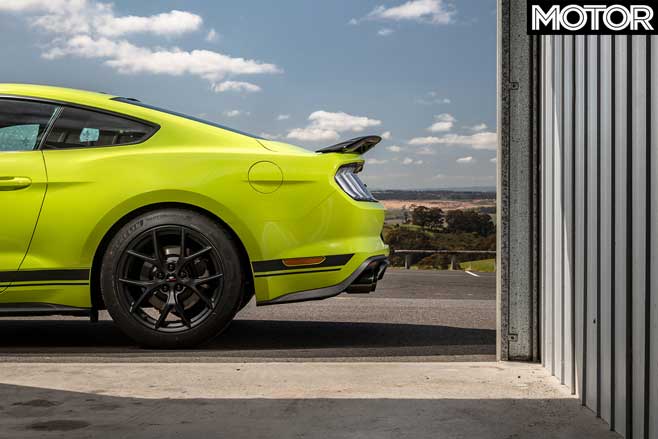
With Herrod, Ford Oz have managed to incorporate the GT’s active exhaust flaps in the rear canister, so it retains four settings, allowing you to switch between loud and quiet and the shades in-between. Overall, though, it’s different.
“It sounds a lot deeper … it’s got a lot more bass to the note,” he says. But this comes with its own set of challenges when trying to pass noise regulations. Though recently changed ADR legislation has been crucial to the R-Spec’s compliance.
“There are a couple of things that a supercharged car has disadvantages over a normal car. Intake noise, air noise and also exhaust noise. All effect the way, ideally you want to go through that test as slow as you can – which I think it’s 46km/h you got to enter, then exit at 58km/h or something like that over a set distance.
“You go in basically full throttle and you’re locked in gear. In fourth gear. And then you go through the speed trap. It used to be, before they changed the rules, in second gear. You’re basically opening up the car then.”
DRIVELINE: SIX GEARS, NOT 10
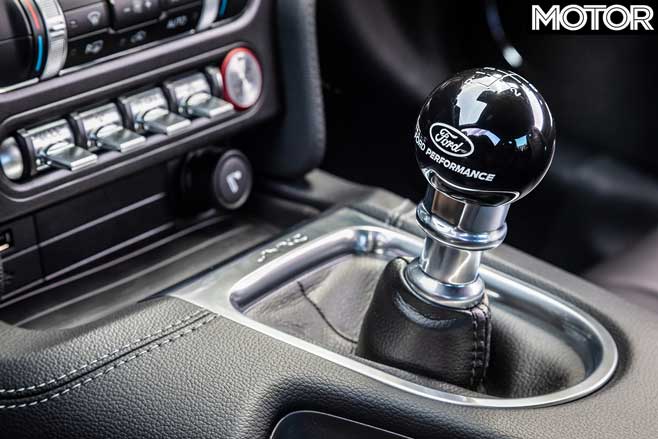
Ford Oz has chosen to equip all 500 R-Specs exclusively with a six-speed manual transmission for various reasons. We understand Ford Australia believes it suits the car’s niche limited-edition status and will help sales.
Meanwhile, Capicchiano adds the fewer, and therefore longer, gears allow the supercharged engine’s massive torque and power to breathe. This at least was the case during racetrack testing at Winton Raceway.
“I could keep that thing in third gear from corner two,” he says, “all the way along the top of the track until you come back down the back straight, and what that let me do is concentrate on my lines and driving. With 700 horsepower, when things happen, they happen pretty quickly.”
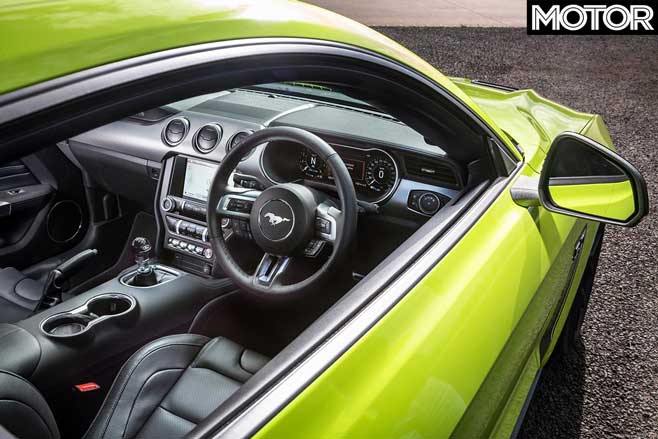
Automatic S550 Mustangs have drawn their fair share of bad press at MOTOR for overheating issues on both street and track, in both supercharged and atmo form, but we understand the choice of a six-speed manual should help the R-Spec side step such problems.
“The base car is set up, with an automatic, it is not designed to be a dedicated track car. You don’t find ten-speed racecars. It’s constantly firing gears, and it’s great in a straight line, but around a racetrack, something where you can actually select a gear, hold a gear, and be a bit more constructive on how you want to drive a car, that’s where I think the manual suits the package.”
Should you want to leave nothing to chance, “there is the opportunity to do that,” Capicchiano says, “[extra cooling] doesn’t come with the car. But there is that ability to go through Rob [Herrod] and do that stuff.”
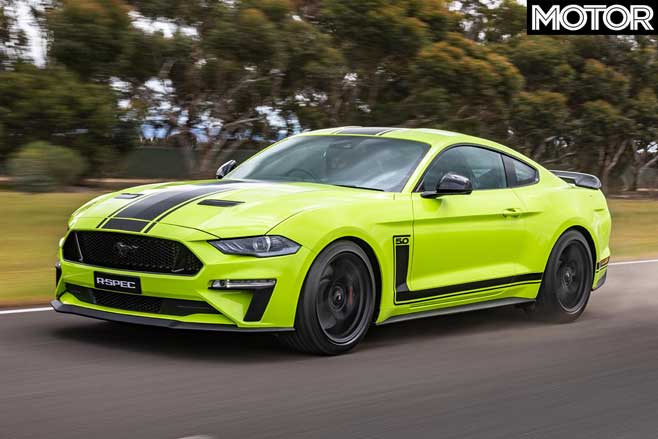
“I did full three sessions [at the track] at seven to eight tenths. To be honest, you don’t find customers will drive their car like Dickie [Dick Johnson] is going to drive that car [at the Bathurst 1000] on the weekend.”
The six-speed manual transmission did not need upgrading either. “It’s pretty robust,” he adds, “it actually takes the load. The Ford Performance guys actually do a great job of validating all that, so we take what they’ve got, and we go off that.”
It certainly helps the Mustang’s 2018 driveline is upgraded with bits from the Shelby GT350. Along with beefed rear half shafts, he says “it’s got a twin-plate clutch, dual mass flywheel [from GT350], so when you drive this car, it’s a lot nicer.”
HANDLING: LOWER, SHARPER
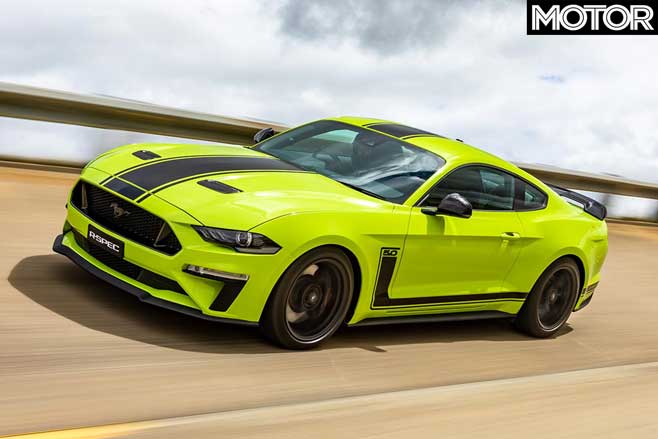
Although the R-Spec uses the same contact patch as before, with Michelin Pilot Sport 4 S tyres measuring 255mm wide at the front and 275mm at the back, they now stretch over wider wheels that are respectively 0.5-inches wider. Or 9.5-inches wide at the front and 10-inches wide at the rear.
The improvements instead have been made around it. The springs are still linear at the front and progressive at the rear, but they’re 20mm lower and been stiffened by 20 per cent.
“It also comes with the dynamic controller as well,” Capicchiano says, “because the cars all have Magneride, you can’t just chuck lowered springs in the car because the dampers need to know what the spring height and rate is to be able to work in their optimum range.”
Now, while the cars are being assembled with Herrod Performance in Ford’s own Broadmeadows facility, each Mustang will have its Magneride flashed with new Ford Performance calibrations for the new spring rates and heights.
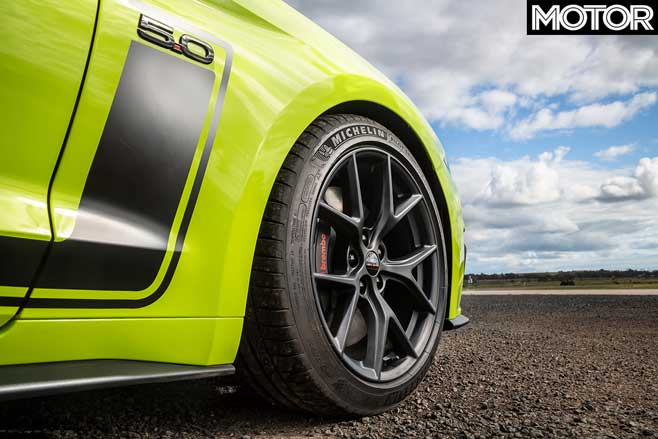
After that a set adjustable roll-bars front and rear complete the handling upgrades. At 37mm diameter in the front and 25.2mm diameter in the rear, they’re respectively 5mm and 3mm fatter. But their two-mode adjustability means you can play around to find your most preferred setup. You don’t even have to take the wheels off, we’re told, but need to jack it up.
“It’s got a flat endplate and two holes,” Capicchiano tells us, “and basically you have a bolt that you can move up.”
“I tried all the settings and we’ve set this one up to how we think we would have it, so it’s actually a little softer in the front and a little harder in the rear, just to get it turn in and use the grip on the front-end.”
AERO: WINGS AND THINGS
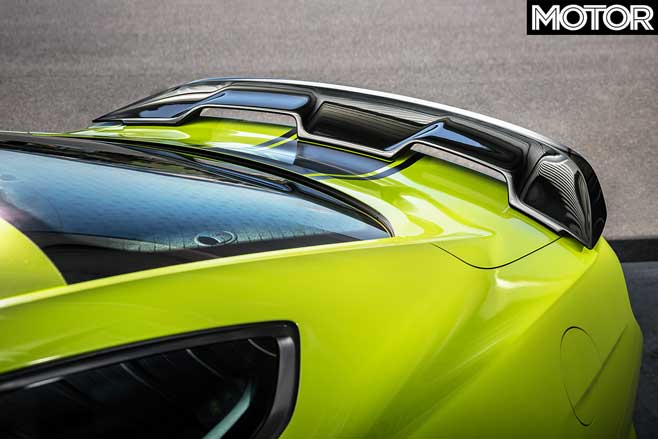
The last, but not least, element of the R-Spec’s performance comes from its aerodynamic package. As you can see, there’s a fairly massive spoiler hanging off its rear lid. It’s off the Shelby GT350 and helps the car produce a “little bit” of downforce.
“I call it the Triple 888 Racing gurney flap,” he says before a laugh.
Ford Australia did have its eye on an a Ford Performance gurney flap but since it does not pass ADRs it’s something buyers will have to install after market.
SO, HOW FAST IS IT?
Capicchiano won’t be tempted on its acceleration times, even though his team did complete them for validation purposes and can say that’s it’s faster than the stock GT. “That’s what you guys need to go away and do,” he says. Well, if we must. Stay tuned.





